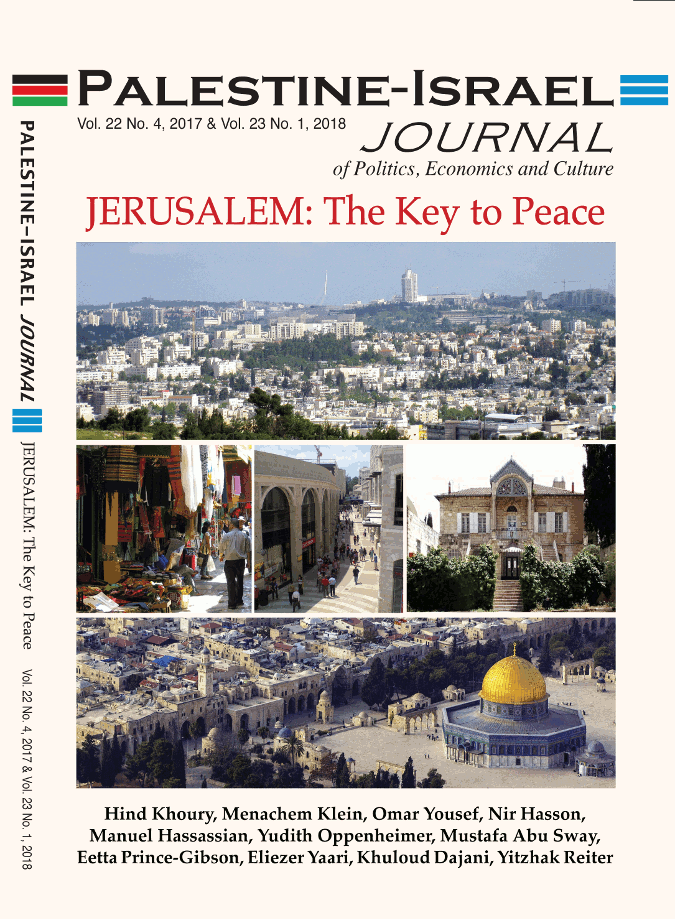Jerusalem is a most striking example of the current deterioration in the relations between Israel, the Palestinians and the Arab/Islamic world. The recent escalation of Israeli activities aimed at converting Jerusalem into a totally Jewish city has had no precedent since the occupation of East Jerusalem began in 1967. These activities will not change the reality that Jerusalem, which the Jews claim only for themselves, is at the heart of the Christian and Muslim faiths.
Christians and Muslims will not give up their rights in the city, and these Israeli activities will only sow the seeds of the coming rounds of confrontations which may, and even almost surely, will be more extreme and violent than ever before.
Successive Israeli governments have tried since the occupation began in 1967 to create facts on the ground by building Jewish neighborhoods in the occupied East Jerusalem, across the armistice line known as the Green Line. The shift in Israeli politics and the rise of right-wing governments have led to more intensive colonizing activities, which do not take into consideration the very existence of the Palestinian inhabitants of the city, their rights or feelings but, on the contrary, try by all means to wipe out their national, political, cultural and social presence.
Imposing severe restrictions on building by Palestinians to accommodate natural population growth, using the Citizenship and Entry into Israel Law to restrict and revoke Palestinians’ right to reside in the city, preventing the development of a local Palestinian political leadership, preventing any cultural activities by labeling them nationalist activities hostile to the Israeli occupation, and imposing Israel curriculam on Palestinian schools are only some of the tools used by the Israeli occupation to liquidate the presence of Palestinians in the city.
At the same time, the more than 320,000 Palestinians of East Jerusalem who found themselves in confrontation with this Israeli attack have developed their own means and methods to confront it — in the absence of the Palestinian Authority, which accepted, in accordance with the Oslo Accords, not to be active or present in the city.
Building without permits to meet housing shortages have become the only way to confront the severe Israeli restrictions on Arab building, at the risk of facing fines or demolition. Developing small private schools into high schools where the Palestinian curriculum is taught, and activating civil society organizations to fill the gap in services to meet residents’ needs, which the occupation doesn’t care about or even intentionally neglects, are some of the methods developed by the Palestinian community in the city to cope with the occupation. The intensive Israeli attack on the Palestinian city and its population is at its peak. Hundreds of houses are on the list for demolition, lands are on the list for confiscation, Arab neighborhoods are facing the threat of being excluded from the city, as the occupation seeks to change Jerusalem’s demographic balance in favor of the Jews by getting rid of as many Arabs to guarantee its Jewish majority.
And last but not least, there has been the recent escalation in Israeli attempts to change the status quo on al-Haram al-Sharif, which Israelis call the Temple Mount, to enable Jews to practice religious ceremonies in al- Aqsa Compound. The Israeli attempts last July to put metal detectors at the Lion’s Gate entrance to al-Aqsa, and the massive non-violent Palestinian protest which succeeded in forcing Israel to remove these detectors, sent a clear and strong message about the potential danger of provoking religious emotions in such a very delicate emotional place such as al-Aqsa Mosque. The peaceful, self-disciplined protests at the gate to al-Aqsa around the clock were not only by Muslims but also Christians who came to participate with their Muslim brothers as an act of solidarity, on one hand, and as an expression of fear of similar attacks on Christian religious sites if the attack on al-Aqsa were to succeed, on the other.
In this issue, Israelis and Palestinians describe the realities in the city, express their fears, and give their valuable recommendations on how to deal with its most boiling issues such as al-Aqsa, the educational system, the health sector and other aspects of life in the city, to leave the door open for a possible compromise and living together in an open and shared city, where East Jerusalem will be the capital of the State of Palestine, and West Jerusalem the capital of the State of Israel.

